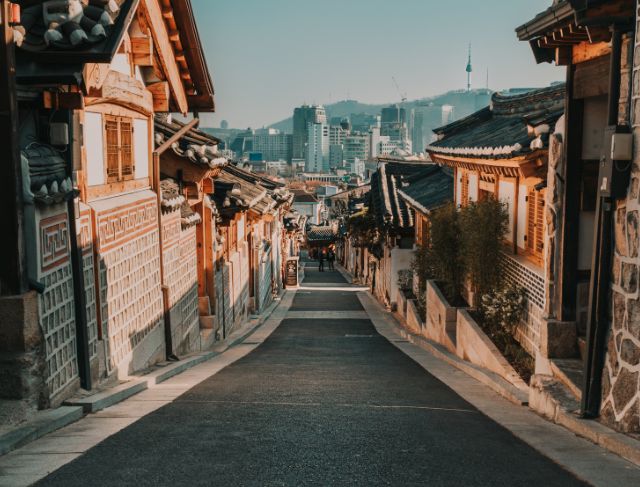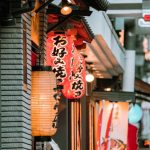Situated in the narrow alleys of Osaka, Zainichi Korea Town is not simply a place to shop; it is a collage of history, culture, survival, and resilience. The aroma of bulgogi sizzling in the air permeates the smoke from yakitori grilling, as the signage oscillates between Hangul and kanji. The atmosphere is surreal—a repository for Koreans, whose ancestors migrated to Japan when Japan colonized Korea, to cling onto what they can, even generations later.
A City Within a City: Where Osaka Meets Seoul
The neighborhood is enriched; not only by its set of kimchi stalls and store fronts with K-pop paraphernalia, but by the extent of cultural preservation. There are few places on this massive planet where generations of immigrants are allowed to hold their cultures beyond three generations. In the Korean neighborhood in Osaka, cultures exist and layer on each other, and carry their pride.
Layers of Migrant and Colonial Weight
In order to understand the importance of Zainichi Korea Town, you need to go back to the early 20th century. During Japan’s occupation of Korea (1910-1945), thousands of Koreans were moved to the industrial economy of Osaka, some were forced. Even so, many of them were planning to go back at the end. However, at the end of World War II, the large geopolitical shifts of dividing North and South Korea wiped out those plans.
In the 1950s, the Korean community in Japan was divided into those who were pro-South and pro-North, resulting in groups organized, such as Chongryon, that supported pro-North Koreans for years, which sustained tensions for decades in an otherwise marginalized community. The Zainichi living experience was therefore often a life lived in limbo between survival status in Japan, while negotiating identity, loyalty, and geopolitics.
Kimchi, Street Food, and Everyday Life
Chances are, without much of a background experience, travelers will be more-than-adequately pulled into the whirl of food and everyday life. Walking down the alleyways, you could see:
- Hungry diners with steaming bowls of bibimbap.
- Vending stalls of hand-stretched, Korean-style noodles, with Japanese snacks alongside.
- Ridiculous capsule vending machines, which yield oddities: charms shaped like bunnies or troubling figurines.
Then, in an idle moment, a quick stop at the corner food cart, might turn into an unexpected sociocultural lesson about health with a vendor, a compliment about skin care customs, or comedic observations about K-pop idols looking down from the lavish selection of goods.
Korean Christianity in Japan
There is no disputing that there exist subtle yet persistently strong manifestations of faith. Within this world of culture are free standing Korean-language churches in Japan, with big bright signs in Hangul that dominate the narrow streets. Christianity did reach parts of the diaspora, providing spiritual leadership and community structure in the Japanese society that otherwise ignored them.
The Zainichi Experience
There is much more to the term Zainichi, than just “in Japan.” Many Zainichi Koreans have lived in, what has been Osaka, for 3 or 4 generations. Some of have pride in being Korean, others pride in being Japanese, while many are just trying to sit in that liminal space in between. They were not allowed to apply for citizenship in Japan for decades, and thus lived in overlapping, liminal cultural spaces: to themselves legally, socially, and emotionally.
Although that tension is still prevalent, it does exist in small, yet very significant forms of expression. You can walk down one alley with pots of pink light selling K-pop gear a store down with a bakery next door — with signs in Japanese and Korean — which both expressions of coexistence.
The Evolution of K-Pop to Korean Fashion
Now, Zainichi Koreatown thrives on modern cultural exchange as much as on tradition. Admirers flock to shops selling magnets, posters, and celebrities selfies of K-pop idols. There are boutique stalls dressing mannequins in Asian and Korean-inspired streetwear styles, demonstrating how cultural youth experiences are globally cross-pollinated.
Some observers jest about cultural deappropriation and dissolving boundaries, however for many younger local residents it is a simple fact of identity in evolution: Korean culture and modern consumer habits have become intertwined into Japan’s commercial landscape.
Whale Shops, Bibimbap Stands
Food continues to occupy the center of the neighborhood’s cultural landscape beyond pop culture references. You may find the whale sashimi shop closed for the day, or discover a bakery with spicy Korean pastries stuffed with ham. Food signifies more than flavor; they often tell stories of invention, survival and struggles to hold on to recipes of home while being away from it.
In short, you get a street experience in which every bite holds layered memories, politics, and migration into a single plate.
Political Unrest and Dueling Loyalties
Contemplating the nuanced political context is one of the more complicated aspects of Zainichi Korea Town. During the Cold War, Osakan Koreans were and often split ideologically. Those who aligned with North Korea established a strong network, operating through Chongryon, a national organization, that established schools and similar institutions meant to align. Meanwhile, those who were pro-South Korea established a somewhat counter cultural current.
In their daily routines, life in these alleys is usually not political—shopping, eating, buying—but the currents and implications of political history are always there.
Who Belongs?
What many outsiders find striking is how both cogent and contradictory it feels to be in Zainichi Korea Town. In Japan, a group of immigrants has maintained cultural practices for now over seventy years, not facing the incredible intense acculturation of many immigrant communities around the world that face erosion of cultural practices. And yet, here we are, once again.
- Do younger generations view themselves as Japanese, or perhaps even a little Korean?
- Have establishments that sell K-Pop, or a series of Korean style kamchi alleys become a source for strength and pride, or perhaps even turn into a place of being socially excluded?
- Is this specific social place a site of resilience, or is it an alienated, excluded isolated zone?
There are no ultimate answers, only winding into the alley that has myriad answers, and complicated responses.
The Importance of Korean Town for Zainichi
Korean Town in Osaka is so much more than a tourist oddity (although it is that too); it’s potentially the planet’s most unique diaspora story. It is where history and current pop culture coexist; it is where colonial scars have pride of place next to neon Idol posters of dreams and success; it is where the small Korean grocery might literally scrape up against a whale sushi stall.
For tourists, it is a dizzying luge down the alley. For sociologists and educators, it is teachable moment of identity in tension. And for Zainichi themselves, it is home.




